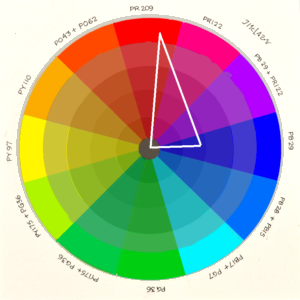Introductory Notes and Self Congratulations
There are many different names for this material. Resist, Masking Fluid, Frisket, Liquid Latex, etc. I will be referring to it simply as ‘resist’, just because this is quicker and easier to type.
A warning about my language: Resist hardens into a pliable rubber-like substance. Before it is completely dried, it will be a mix of dried and half-dried, very tacky little strings and balls. I will be referring to these as ‘boogers’. My wife tells me not to use this term, but it describes them so well. I offer my apologies to the squeamish.
There is a lot of false information out there on Resist and using it. Most of the watercolor artists I have encountered (IRL/book/online) use resist in a very limited way — for things like highlights. I’ve spent a lot of time experimenting with various Resists, Resist/paper combinations, and Resist/Pigment combinations. After over 300 paintings where Resist was involved, I have learned a lot. Much of what I’ve read and seen concerning resist is very incomplete, and, in some cases, not true.
My suggestion for a good starting reference is ‘Using Liquid Frisket’ by Jerry Griffith. There is a lot of good information in this book, but his list of tools is incomplete, and his favorite tool is a disaster, IMO. (The Incredible Nib). In summary, the best thing to do is experiment. Try out different things.
Perceived Negatives
I feel like it is all of the perceived ‘negatives’ of resist the cause most artists to avoid it. I felt that same way for a long time. It was Jean Grastorf (“Pouring Light”) that got my interest up. Most of the ‘negatives’ that surround using resist are centered on:
- Difficult to clean up
- Difficult to apply well, especially for larger areas due to its consistency
- The stark edges that it produces can appear very ‘mechanical’ in the final product.
I will address each of these as we go, relating my discoveries that help alleviate each of these negatives, and in some cases, turning them into positives.
Allergies
Resists are latex. If you have an allergy for latex, you might not want to use resist. Liquid latexes have an ammonia-derivative in them, and a slight ammonia aroma – some brands are worse than others. For most, the odor is very faint. Liquid latexes are used for ‘fake skin’ in masks for Halloween, so for most people, they are harmless in terms of skin contact. If you are one of those artists that have strong allergies, I’m sorry because you will miss the fun that Resist can offer in wc.
Testing
Always test your resist with the paper you intend to use. In an area at least the size of a postage stamp, apply some Resist full strength, and in another spot, some diluted 1:1 with water. Let dry and lift. Try to determine if the paper is disturbed. Mix up a strong wash and paint across the area that was masked. Are there any negative effects in the area where you had the resist? If you will be applying resist over a painted area, be sure to test the resist over the same paint at the same strength you will be covering. Resists lifts some paints quite a bit. Note the results of your test and decide if that will work for you.
